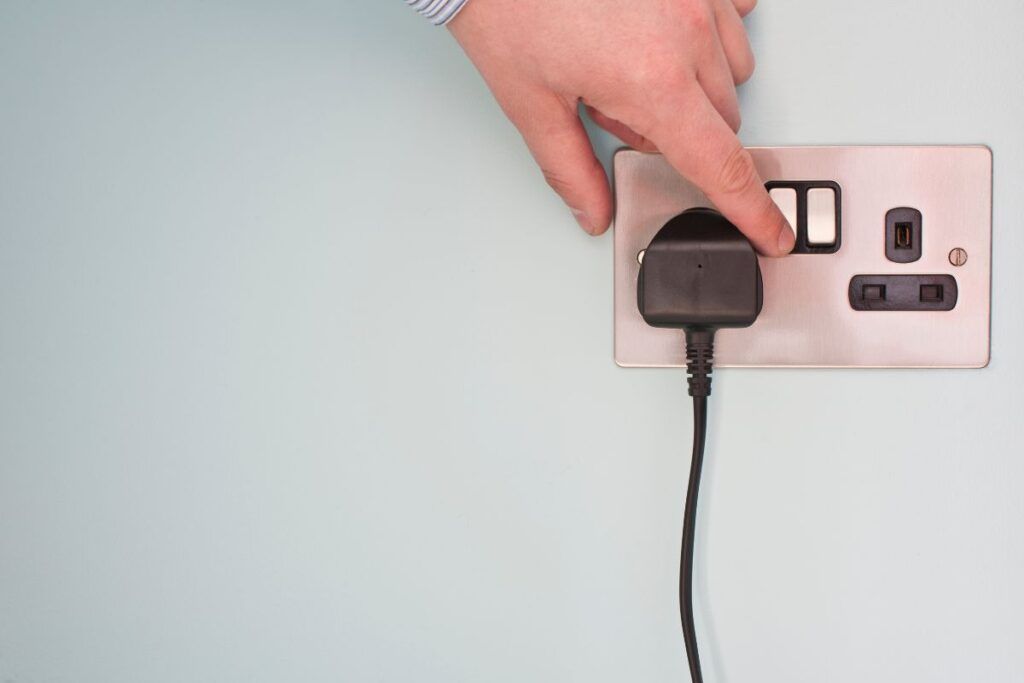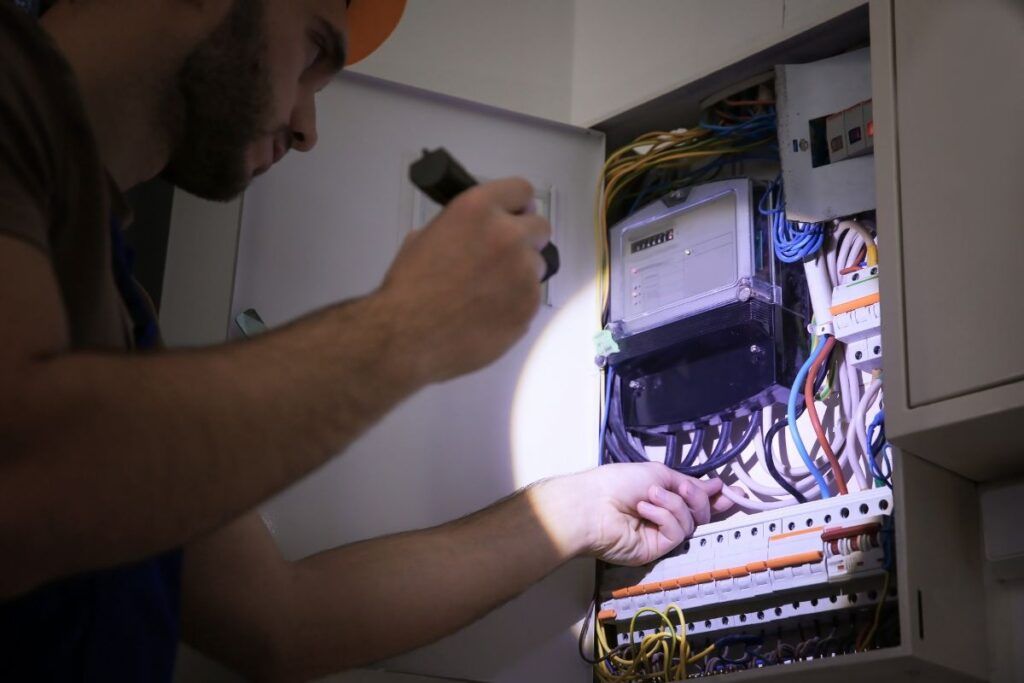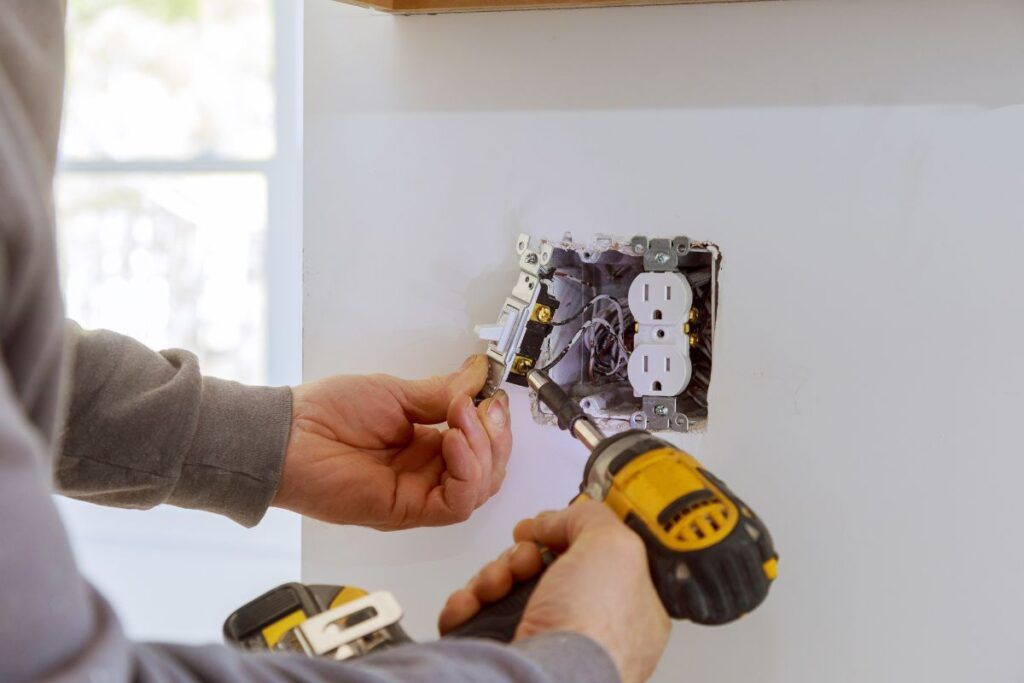Inexperienced people may sometimes bring mismatched switches and circuits for light fixtures. Since most houses have 20 amp circuits, the common question is, can you use a 15 amp switch on a 20 amp circuit? Let’s find out.
Generally, you can use a 15 Amps switch for a 20 Amps circuit, but that will restrict the maximum circuit load to 15 Amps despite the actual circuit capacity being 20 Amps. Also, if multiple receptacles exist, you cannot use a 15 amp switch on a 20 amp circuit because it can overload the switch.
It was just a brief. To gather detailed information on this topic, dive into the article and stick to the end. This guide will help clarify fixing a 15 amp switch on a 20 amp circuit.

Check out our list of top-handpicked products for all your electrical, appliance, and HVAC system needs to keep your home running smoothly.
This post includes some affiliate links.How to find the switch rating?
Sometimes, finding the switch rating according to the circuit is confusing.
But, you can figure it out with an electrician and know the NEC codes.
Use a screwdriver to remove the switch plate that covers the light switch.
You will notice some marks on the switch.
One of the marks along the lines will show you ’15A/120V’.
It means the switch is rated for 15 amps at 120 volts.
On other marks, you will see a UL label, Underwriters Laboratories Inc.
The label indicates that the ULs have tested the switch for safety.
You can also identify whether the switch is AC (alternating current) or DC (direct current).
There will be no label if the switch belongs to both AC and DC.
Some marks on the wiring will tell you the wire material.
It will have written CU, CO, or ALR. CU stands for copper-clad aluminum, CO means copper, and ALR means aluminum.
Can I use a 15 amp switch with a 20 amp circuit?
There is no problem using 15 amp switches on a 20 amp circuit.
If only one outlet is present, you can use the 15 amp switch on the 20 amp circuit.
But consider some more factors before installing the switch to the circuit.
You need to understand the amp and the load combination between the receptacle and the circuit.
Only then will you be able to decide whether you can use the 15 amp switches on the 20 amp circuits or not.
Using the 15 amp switch on the 20 amp circuit might not be acceptable if multiple receptacles exist.
Below is a list of circuit ratings, receptacle ratings, and the maximum load the amp will handle.
- A 15 amp circuit will carry a 12 amp load. So, the receptacle rating should be 15.
- A 20 amp circuit will draw a 16 amp load. The receptacle rating should be 15 or 20.
- A 30 amp circuit will carry 24 amp of load. The receptacle rating should be 30.
As you can see, the 20 amp circuit will carry 16 amp of load, depending on the 80% rule.
So, the maximum receptacle load on this circuit should be 15 or 20 amp.
So, a 15 amp switch will work fine if the load on the circuit is 20 amp or less.
But, if the switch’s load exceeds 16 amps, the circuit will keep tripping.
It means, for a 20 amp circuit, you will be able to use only one outlet carrying 15 amp, over which you will have one 15 amp switch.
Using multiple switches means you have to install multiple outlets.
In that case, the amp load will increase, and the circuit will end up tripping or having short circuits.
If you have a 15 amp circuit, you can install only one light switch on one outlet carrying a 15 amp load.
You cannot exceed the 15 amp load here, as 15 is the maximum limit.
But, the best would be a 10 amp switch because the maximum rated load is 12 amps.
But the circuit may cause a short circuit or trip off during overheating issues.
There will be no space left to handle the overheating.
One amp is equal to 100 watts. So, a 15 amp switch will be able to handle 1,500 watts.
If you cannot find the best circuits and switches, here are two good circuits and switches for you:
National Electric Codes and Switch ratings

All the electrical devices and systems and their loads and ratings are mentioned and standardized by the National Fire Protection Association’s Committee on the NEC or National Electric Codes.
They have designed all the rules and regulations related to electricity to prevent accidents and fire hazards and protect the grids.
They have rated the electric switches according to the maximum voltage, current, and current type (DC or direct current and AC or alternating current).
Switch ratings give maximum voltage and current.
According to the National Electric Code, or NEC, you can use a 15 amp switch over a 20 amp circuit.
The outlet has to be 15 amp for one 15 amp switch.
You can also use a 10 amp switch on the same circuit.
If you put more load just because some amp is left, that will lead to damaging other outlets.
But, you cannot use a 25 amp switch on the 30 amp circuit because the 30 amp circuit will carry only 24 amps of load, which is beyond the rating.
Also read: How Many Lights And Outlets On A 15 AMP Circuit?
How to install a 15 amp switch on the 20 amp circuit?
By now, you must have known that you can use the 15 amp switch on the 20 amp circuit.
But how do you install it?
Before installing a 15 amp switch on the 20 amp circuit, you must gather things and gear up.
Working with electrical things, you need to take care of your protection and ensure that you have properly attached all the things to the outlets, switches, and circuits.
Things required:
- Wire nut
- Switch box
- Electrical tapes
- Single pole switch
- Ceiling box
- 2-wire cable
- Light fitting
- Non-contact voltage tester
Now, get into the steps.
Step 1

Turn off your circuit breaker.
It will stop the current flow and prevent electrocution.
If you have traditional boxes with fuses, turning off the power is different from that of the circuit box.
For fuses, you will have first to unscrew the fuse and remove it from the panel.
Step 2
Wait for some time after turning off the power.
You must check whether the power has turned off or not.
For that, you will require a voltage tester.
Remove the cover plate of your circuit by unscrewing it.
Now, check the wires with your tester.
Also, check the switch’s side screw terminal.
The voltage tester will light up if there is any voltage in your circuit or screw terminal.
Check your circuit box again to confirm if there is any connection.
Otherwise, you can put off the main power supply of your house.
Step 3

Connect the hot wires with the wire nuts inside the metal ceiling box.
For wires, you can try 12/2 gauge wires.
Connect the neutral wire from the ceiling box to the light fitting.
After that, use the black wires from the light fitting and create a connection with the ceiling box and switch.
Attach it with your terminal switch.
Take the white wire and the wire bottom terminal of your switch and pass the wire through the ceiling box.
Use it to join the hot wire nut to the box.
While working with the wires, make sure that the wires are separate from one another.
Also, do not connect the hot wires with the neutral wires.
The white wire will work as the hot wire.
So, use the electrical tape to mark it as a hot wire.
To keep the wires in place and avoid entanglement, you can tie the wires with a wire tie cable.
Step 4
Connect the ground wire with the wire nut within the metal ceiling box.
Using the ground wire, connect the same wire nut with the metal ceiling box.
Join the last ground wire with the wire nut and ceiling box, and connect it with the switch ground terminal.
Check and confirm that the wires are tightly connected.

Step 5
After wiring the circuit and switch, the last step is reinstalling the cover plate.
Now, tie the wires with a wire tie cable so that the wires are not twisted with each other. After that, push the wire back into the box.
Install the switch with the screws into the box and put back the cover plate.
Step 6
After everything is set up correctly, turn the power back.
If you have switched off the main power, first turn on the main power and then the circuit or fuse box.
The switch still needs to be turned on here. The current will flow after the circuit gets power, but till the switch, because the circuit is broken.
Once you flip the switch on, the circuit will be complete, and the current will flow and power the light.
What are the potential problems with these devices?

The builders and contractors cannot violate the rules of the NEC as it is illegal.
Though the builders and contractors are bonded to the codes and rules, the house owners do not get into trouble if they ignore the codes.
But, they will not clear the inspection.
If the damage occurs due to the house owner’s violation, the owner will have to pay for it from the insurance.
There is no issue with using lower-rated appliances in a high-rated outlet switch.
But, there are some drawbacks to it.
The light load can change, but if the load starts exceeding the switch’s rating, it can overheat, create a short circuit, and start a fire.
Besides, the low device may use more electricity depending on the type of system and its age.
That will increase your electric bill.
So, when you shift to a new home, you must check all the systems and for how long there has been no change or upgrade.
Ask the landlord for information.
Get the right switch.
While installing the 15 amp switches on the 20 amp circuits, you must buy the right, good-quality switch.
If you have dimmers on the 3-way switch, it will not work.
Below are some good switches for a 20 amp circuit:
- ENERLITES Toggle Light Switch
- CML Decorator Single Pole Light Switch
Final words
You can use a 15 amp switch in a 20 amp circuit. But before you use it, you need to understand the amount of load the 20 amp circuit can handle.
Your circuit breaker will keep tripping if the load exceeds the maximum amperage. Over time, there might be short circuits and fire hazards.
While selecting the switch for your circuit, you should know how much load it can handle.
Always follow the 80% that recommends leaving 20% space in the circuit that handles the extra load. It will keep your circuit safe from constant tripping and damage.
FAQs
Can I use a 20 amp switch on the 20 amp circuit?
You may use it, but there will be a short circuit if there is any overload.
Depending on the 80% rule, you must leave some space so the circuit can deal with overload in the future.
If you use the full space, the circuit will trip off or have a short circuit during excessive load.
How many outlets can I install on a 20 amp circuit?
Following the 80% rule, the 20 amp circuits can carry 16 amps of load.
Each outlet will draw 1.5 amps.
Depending on that, you should install only 10 outlets.
Also read: Can You Have Outlets And Lights On The Same Circuit?
Can I use outlets and switch on the same circuit?
There is no trouble in keeping outlets and switches on the same circuit.
But here, too, you must keep the load in mind.
Many electricians follow this process by running the switch wires to the remote outlet.
Data Source: National Electrical Code, NEC Wire Table, Electrical wiring, Home wiring.


